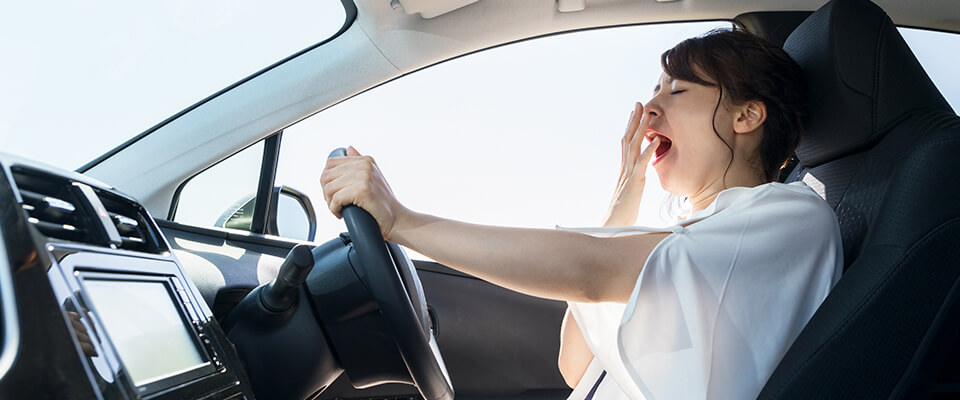Approximately 7,000 people are injured in collisions here every year, a figure that’s far from the lowest in Europe, even as it continues to fall. Although there are many reasons for this, chief among them is driver impairment. We take a look at types of driver impairment, and the role they play in causing havoc on our roads.
What does driver impairment mean?
Before delving into the detail, it’s worth explaining exactly what driver impairment means. Another way of describing it is perhaps, human error. Examples of driver impairment include reckless behaviour, poor reaction speed, medical issues such as failing vision, overall driving ability and decision-making skills. Each of these could result in a range of impairments, which can in turn influence the driving experience and cause collisions.
Driver impairment does not include technical problems, or circumstances beyond the control of the driver. Brake failure, for instance, causing a collision is not driver impairment.
Studies suggest that a large proportion of collisions – more than 90% - are due, at least in part, to driver impairment. This is why it remains a significant focus for road safety groups.

Speeding
Whether you’re in a hurry or just don’t like to hang about, speed limits can strike you as a nuisance. However, driving too fast is a contributory factor in the vast majority of collisions, even on quiet roads.
Speeding and over-confidence go hand in hand, but the fact remains, the faster you drive, the less time you have to react. Situations which you might have handled easily at a lower speed, such as a crater-like pothole, suddenly become unmanageable when you hurtle right into them.
Vehicles handle differently at higher speeds and this can also influence your ability to control them. Your car’s response at 100kph is very different to its response at half that speed. In a split second, you can find yourself with a vehicle you can’t control. Professional stunt drivers are trained to handle tricky road conditions at speed; in the absence of this knowledge and experience, maintaining control can be extremely difficult.
It’s not just the likelihood of collision that rises; its effects worsen too. For every 15kph you drive over and above 80kph, the risk of injury doubles. Drive too fast and you not only risk a collision, you risk one that has life-changing effects. So, slow down. Better to be late than dead on time, as the Road Safety authorities put it.

Keeping your distance
When you’re driving along the road, it may seem as if you’re in a bubble of your own, meandering alongside all the other vehicles. With everyone moving in the same direction, particularly in heavy traffic, it may not seem necessary to keep a safe distance between you and the car in front. You may be concerned that another car will nip into the space, pushing you further back the line of traffic. But driving bumper to bumper to avoid those looking to sneak in isn’t a good idea, because you need enough time and space to react if someone brakes suddenly.
When you drive too close, you deny yourself time to respond to changes in the traffic, even if your response time is typically razor sharp. Everyone needs time to respond to hazards, and if you tailgate you’ll inevitably end up colliding with the vehicle ahead.
Nor are you actually achieving anything. Research suggests that those who weave in and out of the traffic, seeking to gain ground, arrive only two to three minutes earlier than those who stay put. That’s not much of a gain when you consider the risk.
Alcohol and drugs
Alcohol and drug use seriously compromise your driving ability. Even if you’re within the legal limit, you are increasing your chances of a collision when you indulge in either. Although alcohol is the more traditional problem, drug use is equally hazardous, and increasingly the focus of Garda roadside checks.
Alcohol and drugs can affect a driver in many different ways, impairing physical skills such as co-ordination, visual tracking and multi-tasking. Reduced reaction time is another problem for those under the influence.
However, it’s not just the physical changes that drugs and alcohol can trigger; the psychological factors are just as dangerous. An enhanced sense of self-confidence, reduced alertness and poor judgement all contribute to collisions.
Statistics from the Coroners District in Kildare reveal that as many as one in 10 drivers who had died in collisions tested positive for drugs. Alcohol is an even bigger problem; a report from the Road Safety Authority in 2016 showed that it played a part in 38% of fatal collisions in Ireland.

Fatigue
Many people wouldn’t think twice about getting behind the wheel of their vehicle when tired, but research has shown that it can be just as dangerous as driving under the influence of alcohol.
Driving while tired increases the risk of an accident by five times, roughly the equivalent of having had four alcoholic drinks. This can have a catastrophic effect; according to the Road Safety Authority (RSA); fatigue contributes to one in 5 driver deaths every year in Ireland. A survey by the RSA found that as many as one in 10 drivers has fallen asleep at the wheel, a figure that increased to one in 5 when combined with alcohol.
Fatigue represents a very real problem because many people aren’t aware of how seriously it can impair their driving. This means they will get behind the wheel of a car when tired, a scenario they wouldn’t entertain had they been drinking. Safety organisations continue to raise awareness around fatigue and driving; the RSA has its own campaign urging drivers not to ignore the signs.

The attitude of drivers
All the above show how driver impairment can contribute to a collision, increasing both the likelihood of one occurring as well as its severity. There may, of course, be added contributing factors, such as driver distraction, impatience or even anger at other road users.
Other biological factors which fall within the ambit of driver impairment include medical conditions, failing eyesight and advancing years, all of which can cause problems with spatial awareness, the ability to control the car at speed, and reaction times.
Driver impairment plays a huge role in road collisions, so it’s important to take it seriously. Never get behind the wheel when you can’t concentrate - and avoid being distracted by mobile phones or other devices. These safeguards won’t guarantee that you’ll never have a collision, but they will increase your odds of staying safe. ‘Alert today, alive tomorrow’ is more than just a slogan! Safe journey.


